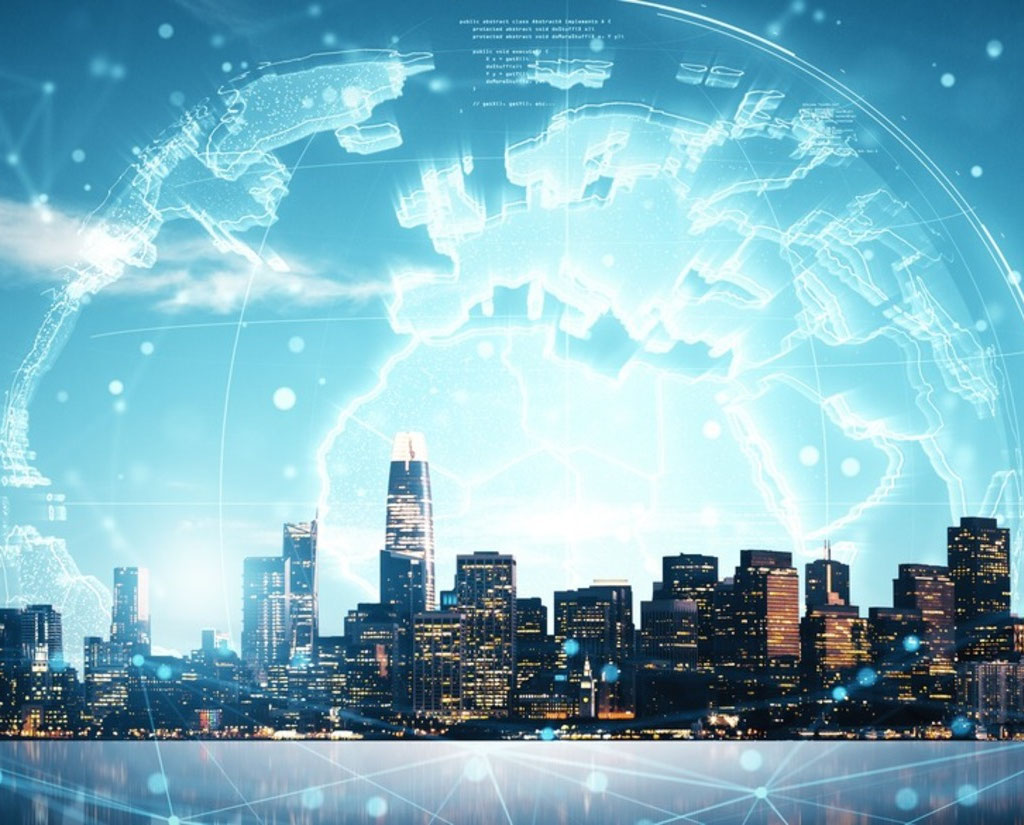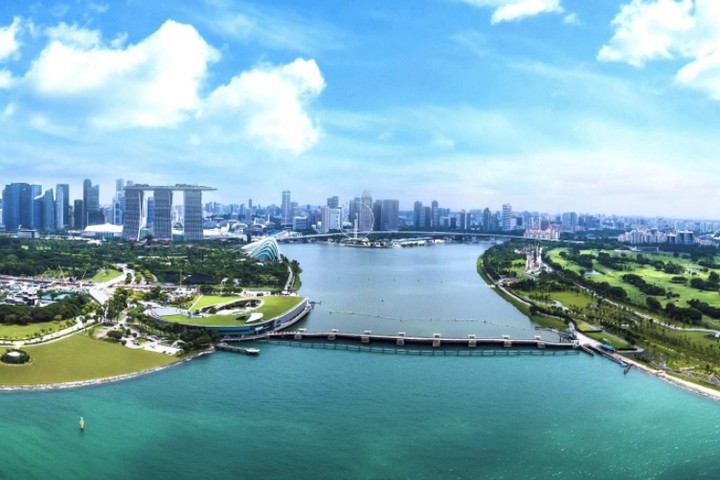
Water, something many of us take for granted, is one of the most essential components of our world. We humans need clean water to survive, but we also use water for many other purposes, from running our toilets, to watering our crops, to cleaning our homes. Just about any process you can think of requires water in some way. But who treats our water, delivering it to our homes and making it safe for use? And what are the unseen costs of this essential service?
Water management around the world (i.e. the Global Water Sector) includes all organizations and infrastructures that manage the collection, treatment, and distribution of water and wastewater for the sake of the broader community. A fact that may surprise you is that this sector contributes an estimated 5 percent of the globe's yearly greenhouse gas (GHG) emissions. But what actions cause this 5%? Can it be decreased? To answer these questions, we need to know a little more about the challenges facing the global water sector.
What challenges lie ahead?
For many people in municipal and developed communities, centralized access to clean water and the removal of wastewater is a service that has existed for decades, if not centuries. However, in many other parts of the world, the development of these water-related infrastructures is an ongoing process.
A quarter of the world’s population lacks safe drinking water and half lack safely managed sanitation, but delivering clean, potable water to more people also has an emissions problem. As more people gain access to clean water from larger water treatment agencies, greenhouse gas emissions may rise in proportion as a byproduct of current water collection and treatment processes.
Furthermore, the worsening scarcity of fresh water resources in many parts of the globe has led the water sector to seek out new sources of water. In some cases, communities have resorted to desalinating salt water from the ocean. In other places, water agencies take wastewater, treat it, and add it back into the system of potable water, rather than releasing the treated water back into the environment first. And in many arid regions, substantial resources have been invested in transporting fresh water to the community from hundreds of miles away.
In short, all these methods require some input of energy to collect, transport, or treat the water. So as the water sector expands to reach underserved populations, it is also faced with the question of how to do so while minimizing their growing contribution to global GHG emissions.
Here are some of the surprising (and unsurprising) ways that the water sector is related to GHG emissions.
Obtaining and Treating Water
Finding, extracting, moving, and storing water all uses lots of energy. Furthermore, since many regions do not have adequate access to emissions-free energy sources, water treatment can cause significant releases of greenhouse gases. More efficient methods for water collection and delivery are needed on both macro and micro scales.
It should also be noted that second greatest contribution of GHG emissions from the water sector is actually an incidental one; Methane (CH4), Nitrous Oxide (N2O), and Carbon Dioxide(CO2) gases which escape from wastewater into the atmosphere account for more than 20% of the water sector’s GHG emissions. Additionally, one recent study suggests that escaping GHG emissions from reservoirs are an even higher contributor than initially expected.
Finding More Water / Water Stress
Since many regions around the world are suffering from water stress (either a lack of sufficient water resources or water infrastructure), some states have begun resorting to alternative ways more and more extreme means of securing water resources and water treatment. In these regions, it would appear efficient to look instead to wastewater recycling and salt water desalination as sources of clean water, rather than transporting from abroad, but oftentimes this comes with additional GHG consequences.
These various measures for securing water can be seen across the globe. For example, water management authorities in both Texas and California currently use some method of returning treated wastewater back to the potable water network. And expensive desalination projects have become more common across wealthy communities in the Middle East,. But unfortunately, reprocessing wastewater and desalinating sea water require even more energy and resources than traditional methods of acquiring clean water, making these methods less viable in the long run, at least without implementing an emissions-free energy resource or improving the efficiency of these technologies. And since cost is also a factor when building water infrastructure on a large scale, incorporating an expensive treatment method with an expensive, emissions-free energy source may not be reasonable.
Individual Water Uses
These are some of the ways that the actions of the water sector on the macro level are contributing to GHG emissions. But the picture isn’t complete without mentioning cumulative effects of inefficient water use on the micro level.
Water use habits and behaviors vary between places, cultures, and levels of economic wealth. For example, in many developed communities, an over-reliance upon clean water for all activities or inefficient uses of clean water has become the norm of many people, who may not realize the strain that this places on the water sector.
One instance of this is how using drinking-quality water to operate our toilets is often considered a wasteful use of a scarce resource, especially if those toilets aren’t maximizing their water efficiency (the EPA estimates that, on average, toilets account for nearly 30% of a US household’s total water use). Yet for many people, it is difficult to imagine managing our waste in any other way.
When you take a region whose population and levels of water use are rapidly increasing, the task of instilling efficient water-habits and efficient infrastructure norms will be increasingly important. Otherwise we risk exacerbating water stresses around the world as we bring water access to more and more people who can open the tap. Perhaps exploring innovative means of replacing these unnecessary uses of clean water or designing a more efficient infrastructure model for others to follow are the next steps needed.
Sustainability in Water Management Helps Fights Climate Change
Now is the time for sustainable advances in the realm of water collection, transportation, and treatment. The amount of GHG output and the energy required by the global water sector is relatively small, but it is nonetheless substantial and it will continue to grow with each coming year as the network is expanded.
Solutions that can make a difference in this issue will be able to address one or more of the following points, though this list is not exhaustive:
- Transporting water more efficiently
- Making renewable energy sources more accessible to the global water sector
- Finding new uses for wastewater or means of deriving useful products and energy from it
- Reducing GHG emissions from wastewater plants and reservoirs or capturing them
- Creating more energy-efficient and resource-efficient means of treating water
- Designing products or systems that enable water-efficient behaviors on the micro level
- Crafting policies that ensure less financially empowered regions are able to build efficient systems of water infrastructure from the beginning, in anticipation of the growing number of people they will serve
- Discovering methods of sustainably maximizing water resources that are closer to home, rather than searching further and further abroad
So what now?
This has been a cursory look at how the global water sector is reacting to current global trends while also seeking to bring water to more and more people on the margins. This process does contribute directly and indirectly to GHG emissions, but hold in mind that the total human impact upon global water resources and the greater environment extends far beyond the realm of the water sector. Unfortunately, a growing prevalence of droughts has intensified water stress in many regions world-wide, but this offers even more reasons to address the issue of creating a more sustainable water sector.
The Carbon Zero Grand Challenge is your chance to think about how PUB, Singapore’s National Water Agency could lead the charge in reducing or eliminating GHG emissions from the water sector. PUB currently captures rainwater, imports water from Malaysia, desalinates seawater, and cleans “used” water all for the purpose of meeting their nation’s water demands. Throughout all of this, how can PUB achieve net zero carbon emissions? If you want to help tackle this worthwhile problem, join the challenge today. The future could be in your hands!








